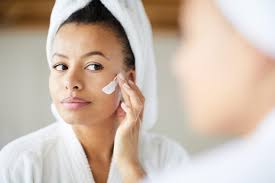Skincare Myths About Hyperpigmentation You Should Stop Believing
Hyperpigmentation, or the appearance of dark spots and uneven skin tone, is a common skin concern that affects people of all skin types. However, misinformation about its causes and treatments continues to circulate. Believing in these myths can prevent you from effectively treating and preventing hyperpigmentation. Here are some of the most common skincare misconceptions about hyperpigmentation and the truth behind them.
Myth 1: Hyperpigmentation Only Affects People with Dark Skin
While hyperpigmentation may be more visible on darker skin tones due to higher melanin levels, it can affect individuals of all skin types. People with fair skin can also develop dark spots from sun exposure, post-inflammatory hyperpigmentation skin, and hormonal changes. Everyone, regardless of skin tone, should take preventive measures and use proper treatments.
Myth 2: Sun Exposure Helps Fade Dark Spots
Some people believe that getting a tan will help even out hyperpigmentation, but in reality, sun exposure can worsen it. UV rays stimulate melanin production, which can darken existing spots and create new ones. Wearing a broad-spectrum sunscreen with at least SPF 30 daily is essential to preventing further pigmentation issues.
Myth 3: Hyperpigmentation Can Be Permanently Removed Overnight
There is no overnight cure for hyperpigmentation. Treating dark spots requires consistent use of targeted skincare ingredients, such as vitamin C, niacinamide, and alpha hydroxy acids. It may take weeks or even months to see noticeable improvement, depending on the severity of the condition and the effectiveness of the treatment.
Myth 4: Lemon Juice Is a Safe and Effective Treatment
Many people turn to natural remedies like lemon juice to lighten dark spots, believing that its citric acid content can fade pigmentation. However, lemon juice is highly acidic and can cause irritation, dryness, and increased sun sensitivity, which may worsen hyperpigmentation. Instead, opt for dermatologist-approved treatments like kojic acid or licorice extract, which have been clinically proven to reduce dark spots safely.
Myth 5: Only Expensive Skincare Products Can Treat Hyperpigmentation
While luxury skincare products may contain high-quality ingredients, effective hyperpigmentation treatments do not have to be expensive. Many affordable options contain proven ingredients such as retinol, azelaic acid, and sunscreen, which are essential for preventing and treating dark spots. Consistency and patience are more important than the price tag when it comes to seeing results.
Myth 6: Exfoliating More Frequently Will Make Hyperpigmentation Disappear Faster
Exfoliation can help remove dead skin cells and promote a brighter complexion, but over-exfoliating can lead to irritation and worsen hyperpigmentation. It’s important to use exfoliating products, such as glycolic acid or lactic acid, in moderation—usually two to three times a week—to avoid damaging the skin’s barrier.
Myth 7: Makeup Can Worsen Hyperpigmentation
Some people believe that wearing makeup can make hyperpigmentation worse, but using non-comedogenic, SPF-infused, and skin-friendly makeup can actually help protect the skin from further damage. The key is to remove makeup properly at the end of the day and follow a skincare routine that includes hydration and sun protection.
The Truth About Treating Hyperpigmentation
Addressing hyperpigmentation requires a combination of proper sun protection, gentle exfoliation, and targeted treatments with scientifically backed ingredients. The most effective way to reduce dark spots is through a consistent skincare routine, avoiding triggers like excessive sun exposure, and consulting a dermatologist for severe cases. By debunking these myths and following evidence-based skincare practices, you can achieve a more even and radiant complexion. You can test with immune-supporting functional tea.

